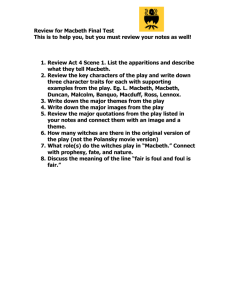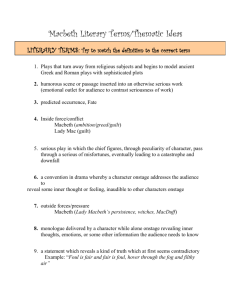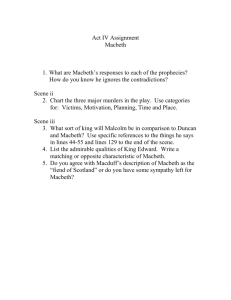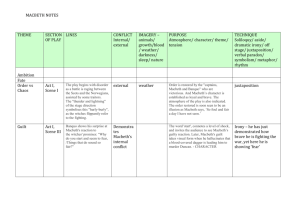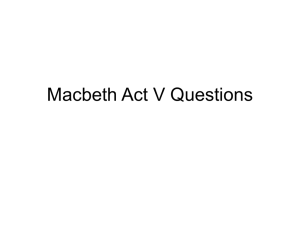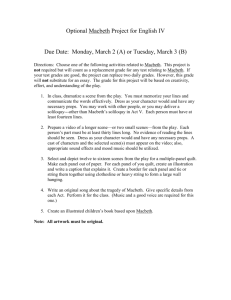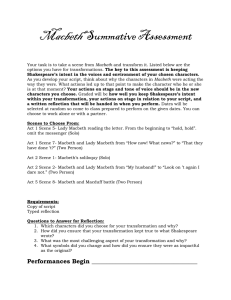macbeth techniques used by shakespeare to
advertisement
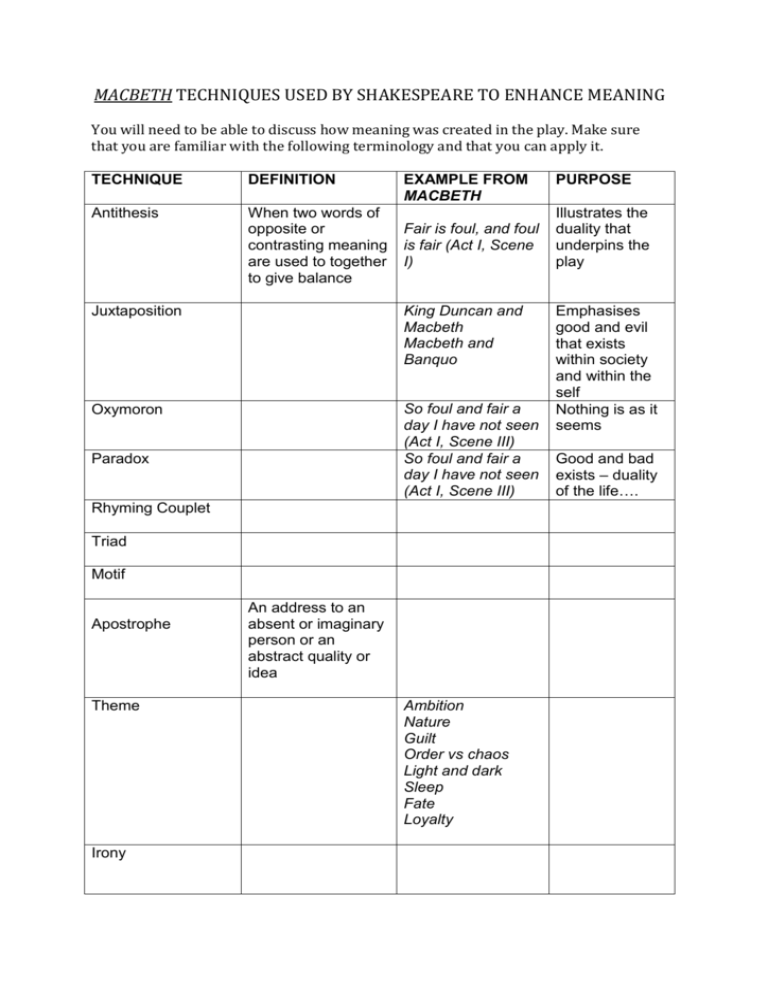
MACBETH TECHNIQUES USED BY SHAKESPEARE TO ENHANCE MEANING You will need to be able to discuss how meaning was created in the play. Make sure that you are familiar with the following terminology and that you can apply it. TECHNIQUE DEFINITION Antithesis When two words of opposite or contrasting meaning are used to together to give balance EXAMPLE FROM MACBETH Fair is foul, and foul is fair (Act I, Scene I) Juxtaposition King Duncan and Macbeth Macbeth and Banquo Oxymoron So foul and fair a day I have not seen (Act I, Scene III) So foul and fair a day I have not seen (Act I, Scene III) Paradox Rhyming Couplet Triad Motif Apostrophe Theme Irony An address to an absent or imaginary person or an abstract quality or idea Ambition Nature Guilt Order vs chaos Light and dark Sleep Fate Loyalty PURPOSE Illustrates the duality that underpins the play Emphasises good and evil that exists within society and within the self Nothing is as it seems Good and bad exists – duality of the life…. Dramatic Irony Binary Opposition Placing two things that are complete opposites together to contrast them Natural vs unnatural Good vs evil Light vs dark Noises that are made during the play such as music, bells, cries etc Ringing of the bell to indicate murder Foreshadowing Symbolism Foil Metonymy Personification Hyperbole Pun Metaphor Allusion Imagery Register Repetition Aside Onomatopoeia Sound Tragic hero Hamartia Hubris Mood Tension Tone Atmosphere Soliloquy Prose Off stage Iambic Pentameter Internal conflict External conflict A reflection of the attitude of the writer used to create the mood, it is used to convey the attitude of the writer. Relies on diction, imagery, language and syntax. It can change. Macbeth’s fear contributes to the tone of suspense, trepidation in Act I Scene III. Lady Macbeth’s determination and evil desire contribute to a sinister tone in Act I, Scene V. Change in Lady Macbeth’s tone when the messenger enters Act I, Scene V Support theme Create tension Illustrate the attributes of the character

